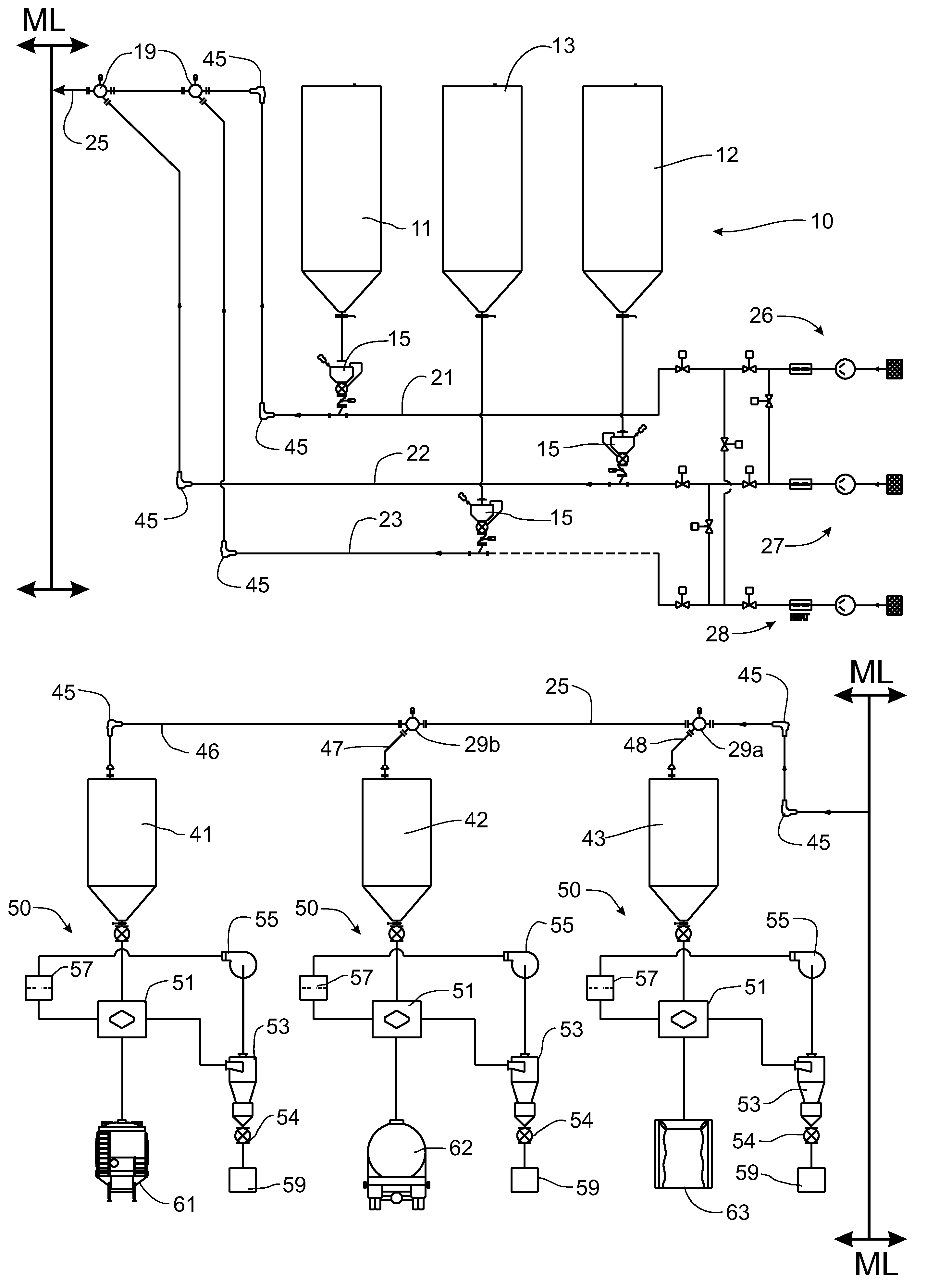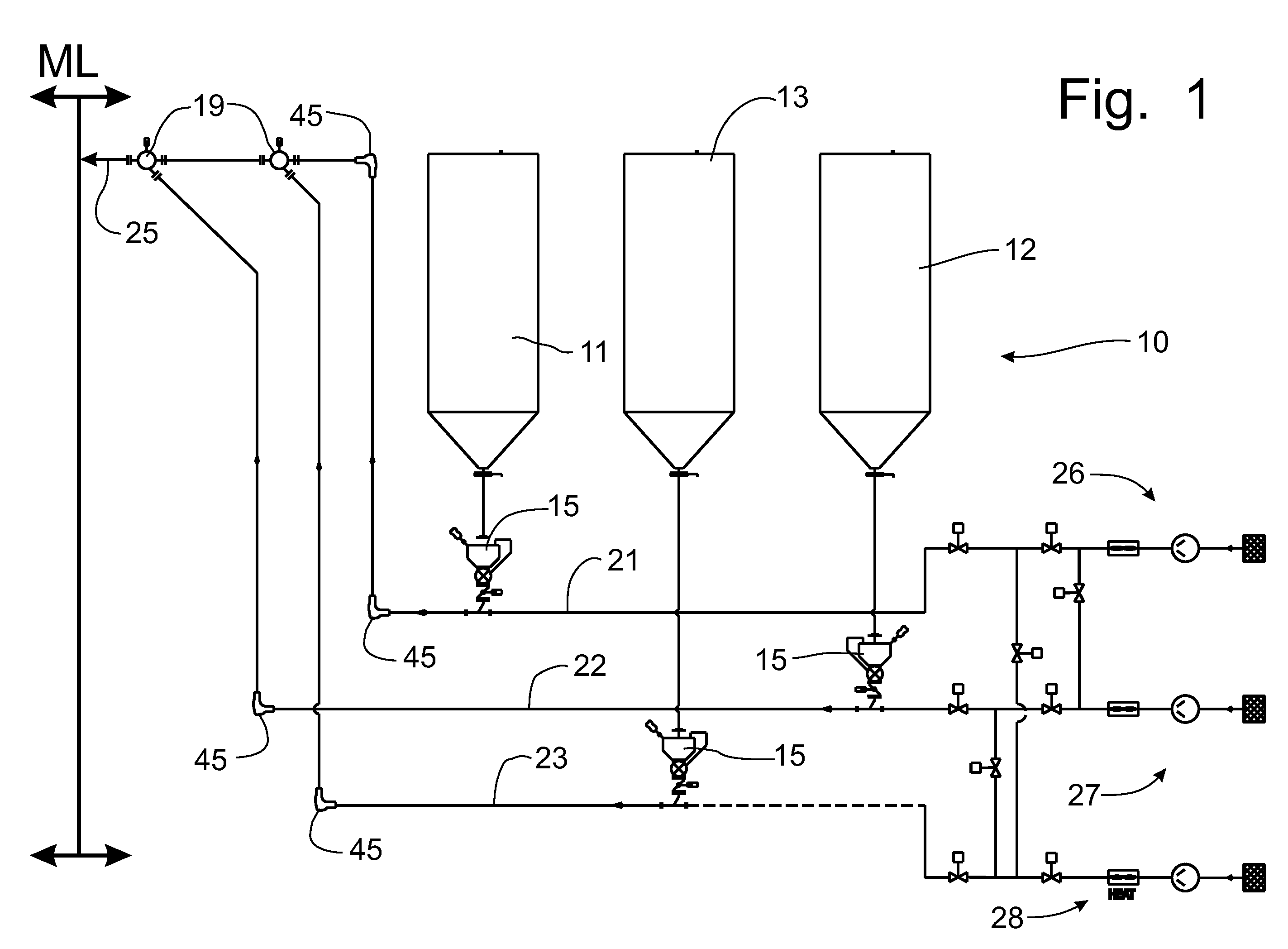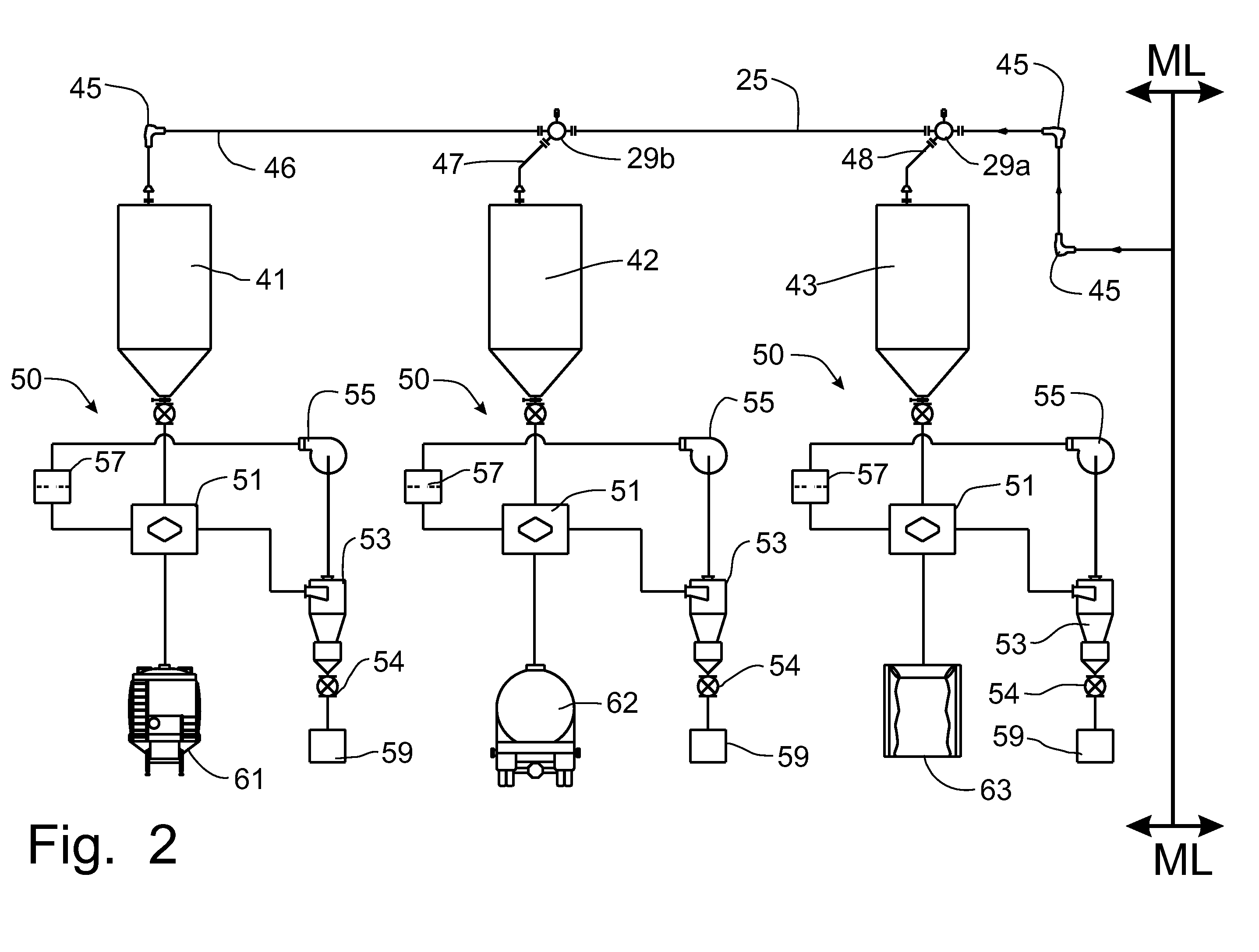Pneumatic conveying process for particulate materials
a technology of pneumatic conveying and particulate materials, which is applied in the direction of gas current separation, liquid transfer devices, transportation and packaging, etc., can solve the problems of affecting the flow of materials, and even blocking the flow of materials through the pip
- Summary
- Abstract
- Description
- Claims
- Application Information
AI Technical Summary
Benefits of technology
Problems solved by technology
Method used
Image
Examples
Embodiment Construction
[0038]The expanded elbow fitting, rotary valve and dedusting apparatus are known in the art. A description of the structure and operation of an expanded elbow fitting can be found at U.S. Pat. No. 6,951,354, granted on Oct. 4, 2005, to Jerome I. Paulson, specifically as shown in FIGS. 1-4 and described at column 4, line 63, through column 7, line 54, and in U.S. Pat. No. 7,300,074, granted on Nov. 27, 2007, to Jerome I. Paulson, specifically as shown in FIGS. 1-5 and described at column 5, line 25, through column 6, line 54, both of which have been assigned to Pelletron Corporation. A description of the rotary valve configured to enhance conveying efficiencies and minimize air losses from the pneumatic conveying system can be found in U.S. patent application Ser. No. 12 / 717,152, filed on Mar. 4, 2010, specifically as shown in FIGS. 2-7 and described at Paragraphs [0033] through [0037]. A description of the structure and operation of a dedusting apparatus and a compact dedusting appa...
PUM
 Login to View More
Login to View More Abstract
Description
Claims
Application Information
 Login to View More
Login to View More - R&D
- Intellectual Property
- Life Sciences
- Materials
- Tech Scout
- Unparalleled Data Quality
- Higher Quality Content
- 60% Fewer Hallucinations
Browse by: Latest US Patents, China's latest patents, Technical Efficacy Thesaurus, Application Domain, Technology Topic, Popular Technical Reports.
© 2025 PatSnap. All rights reserved.Legal|Privacy policy|Modern Slavery Act Transparency Statement|Sitemap|About US| Contact US: help@patsnap.com



